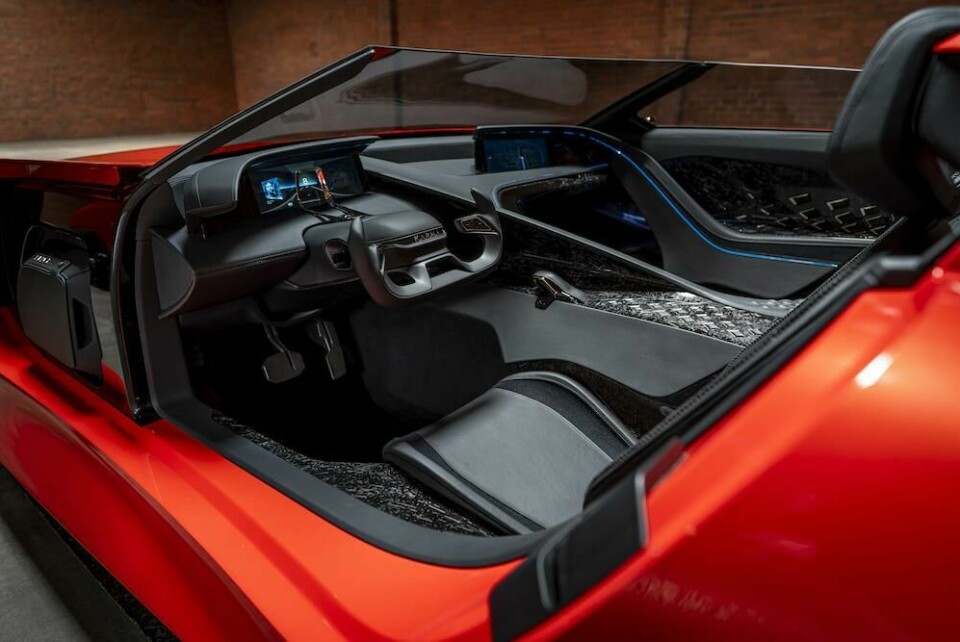
Karma SC1 Vision & SC2 - interior design development
On a conceptual level, the SC1 is organised around three ‘reads’: firstly, all about its (exterior) proportions, the dramatic length and simple massing, reinforced by large wheels and strong graphics. The second ‘read’ is of the complex interior, with the third revealing more and more details within the closer one looks.
Karma Automotive, now owned by the Wangxiang Group, made a bold statement at the Shanghai auto show with its SC1 Vision Concept, a dramatic roadster previewing the evolution in design language for the brand. Its design drew inspiration from Karma’s California home: its climate, its culture, the glamour of Hollywood, the dynamics of surf and hot rod culture, and the state’s heritage of innovation in both the aerospace and automotive sectors all found a place in the styling of the SC1.
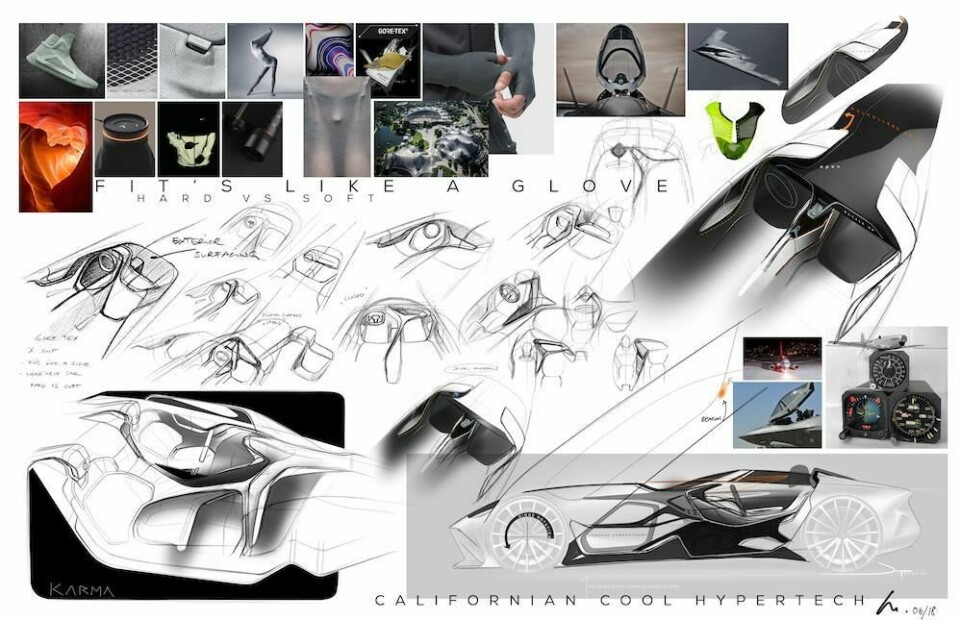
The ‘horizon orange’ of the first SC1 evokes the brilliant Californian sunsets, and the long hood and cab-rearward architecture are suggestive of racing aircraft: the team cite the Hughes H-1 of 1935, which set a new speed record and influenced the design of planes for a decade. “The proportions of that plane and its elegant surfacing were translated for the Vision concept car,” recalls Jacques Flynn, concept design manager.
The project commenced with sketching in April 2018, building up scale, and design of the interior began in June 2018, using VR as well as clay and foamcore modelling. Construction of the Shanghai show car started in October 2018.
Gallery - Karma SC1 interior and exterior sketches
On a conceptual level, the SC1 is organised around three ‘reads’: firstly, all about its (exterior) proportion, the dramatic length and simple massing, reinforced by large wheels and strong graphics. The second ‘read’ is of the complex interior, with the third revealing more and more details within the closer one looks.
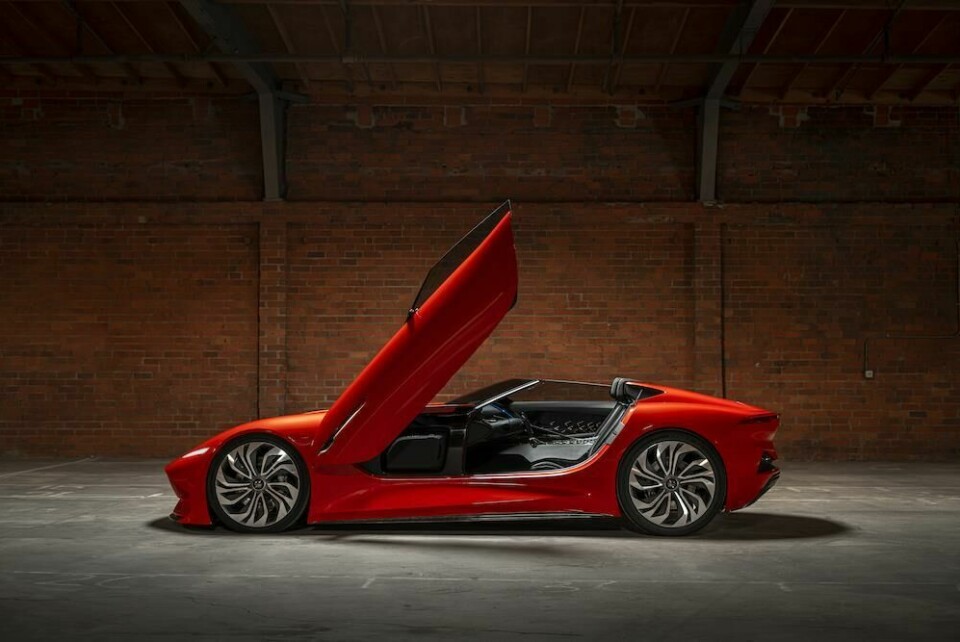
Approaching the car, dramatic wing doors sweep up, operated via facial or fingerprint recognition technologies. Once seated, the doors close; they celebrate the occasion, like a Hollywood red-carpet welcome. As one enters the cockpit, the features are unveiled: a bespoke set of luggage is tucked into clever recesses behind the winged doors, for example.
The fuselage-style roadster body has a low windscreen which wraps around the cockpit and fades into the rear deck, while the interior is intended to be snug and secure. “The cockpit is about creating an environment, and is designed to fit like a glove,” says lead interior designer Andres Franco Luis. “Everything is about enhancing the driving experience; and as a luxury company, we need to give our customers the best possible experience.”
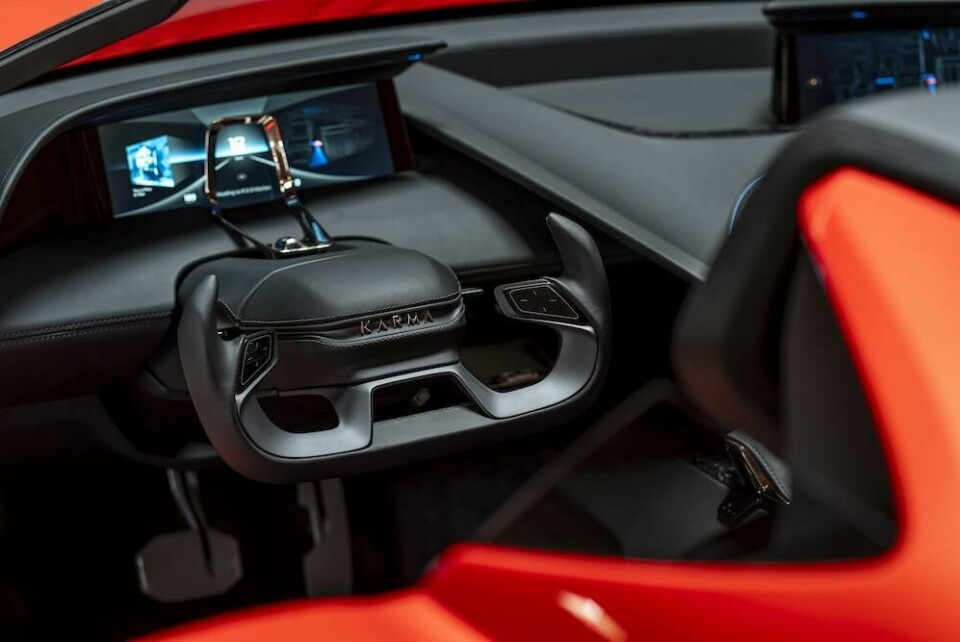
The asymmetric cockpit is divided into two areas: the driver’s space is given priority, while the passenger enjoys the ride. In front of the driver is an aircraft-style yoke or three-quarter steering wheel. Above the steering yoke is a laser-based, panoramic head-up display that projects relevant information directly in front of the driver; this yoke adjusts, as do the pedals, to fit the driver, since the seats are fixed into the fuselage.
There are two curved screens in front of driver and passenger and two OLED touchscreens embedded in each door panel to control climate settings. The screens in front of the driver/passenger are informed by AI, and the passenger screen can also be used for video playback. The touchscreens “have haptic feedbacks, taken from the aviation industry, which allow you to control functions without taking your eyes off the road,” says Jacques Flynn.
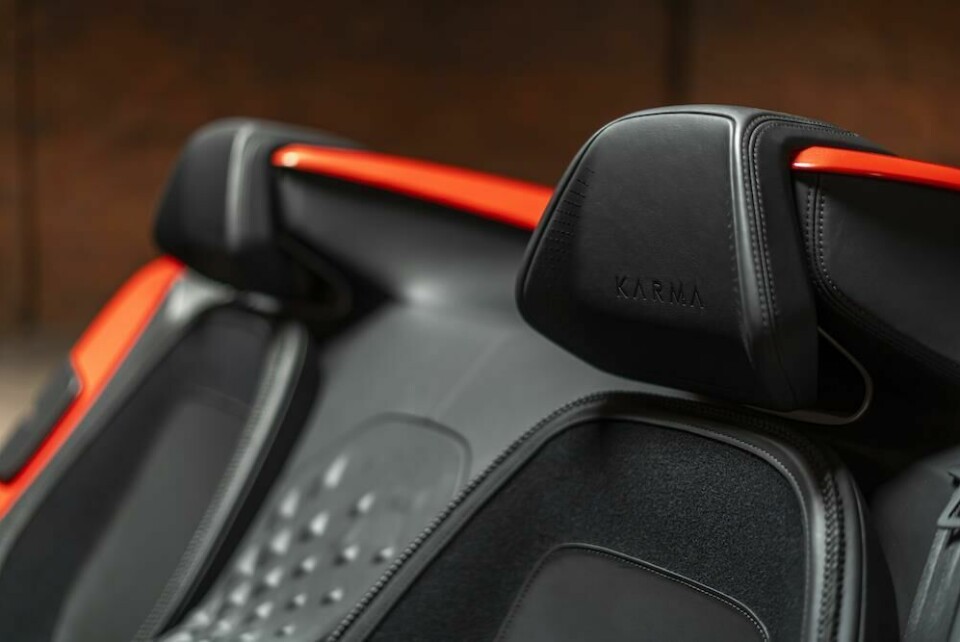
The seats are divided into three segments: lower cushions, backrests and headrests, corresponding to touchpoints along the body. The backrest is bonded to the bodyshell, as is the headrest, which grows out of the rear deck uniting inside and out; the seat has sections of neoprene, bonded to a contrasting cashmere. The hard carbonfibre shell of the walls and floor, meanwhile, is interposed with perforations and pads of soft leather surfaces where the body and arms or hands touch.
The overall feel of the cockpit, with its variety of forms and surfaces, is very organic, as if the interior were weathered out of solid rock. Indeed, the dramatic curving sandstone surfaces of Antelope Canyon in Arizona were an inspiration, notes Andres Franco Luis.
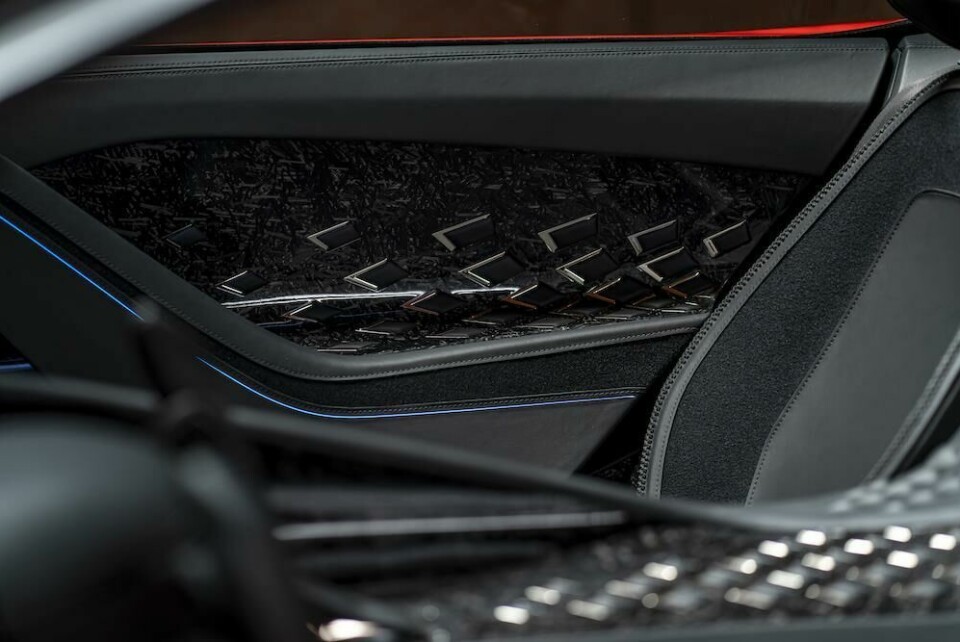
Ambient lighting comes from LEDs and diffusers found in the armrest cavities in the doors, and in the recessed areas around the seats. More subtle LEDs run along key lines in the cockpit, and are employed to balance the positive and negative spaces. “The LED lights are made of individual strands of 0.5mm Versalume fibreoptics,” explains Luis. “This allows not only thin strips of light, but also a remarkable integration of interior surfacing and lighting.”
Panels of 3D-printed materials are crafted according to the ergonomic needs of the passengers in particular areas. These appear ‘quilted’ with diamond and chevron patterns, and the carbonfibre of the cabin is blended for a unique appearance. The LED strands are integrated to varying degrees with these patterns, allowing for a jewel-like quality to the surfaces, with woven-in threads of light. “It’s about discovering little details and falling in love over and over with the things you see and touch,” says Adelaide Begalli, lead designer for colour, materials and finish.
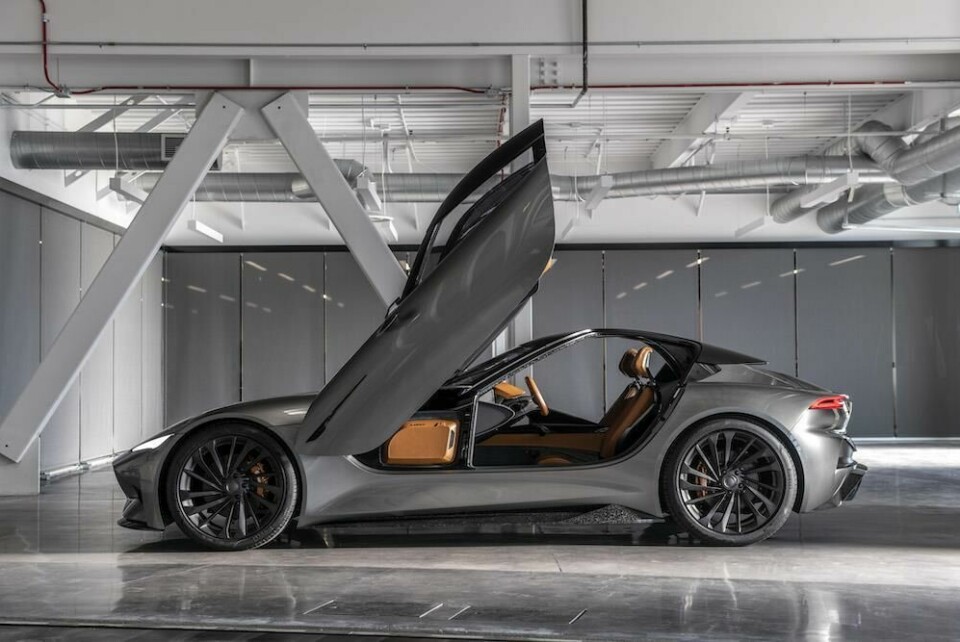
The SC1 was seen again at the Los Angeles auto show in November 2019, now in a silver colourway – and accompanied by a hard-topped ‘Vapor Gray’ counterpart, the SC2 coupé. “The two cars are more different than they may seem at first glance,” says Karma design vice president Andreas Thurner. “The SC1 is a lifestyle statement, and a statement about the general direction of the Karma brand. The SC2 is all about the drive. It is a more mature statement of what we imagine a hypercar could be, and embodies elements of both today and tomorrow’s Karma technology and lifestyle. We think of it as a gentleman’s racing car.”
The asymmetry of the cockpit is more pronounced in the SC2, where the total emphasis is on the driver – the company’s research has shown that the majority of Karma owners drive alone much of the time. The screens are oriented towards the driver (a screen for the passenger will be optional).
Gallery - Karma SC1 interior
“The SC2 is a driver’s car,” stresses Thurner. “It is all centred on the steering wheel. The wheel, an actual closed square, as opposed to the yoke in the SC1, contains haptic fingertip controls. Unlike in the SC1, where the seats were fixed and a part of the fuselage, the SC2 seats are adjustable, with carbonfibre frames and covered with Bridge of Weir leather. They are biometric units which learn the shape of your body and adjust on demand. Every control and screen is within easy reach of the driver. There is an ultrasonic sensor stalk which allows for seamless transitions between regenerative and friction braking.”
The 3D sound system enables separate audio environments for driver and passenger, and the Karma Drive and Play system allows recording of every aspect of a journey: speed, braking, acceleration, steering, suspension reaction, wheel travel and even environmental background such as light conditions, temperature and audio soundtrack. Multiple sensors, including a triple high-definition camera under the windshield and LiDAR units make a very accurate record of the drive.
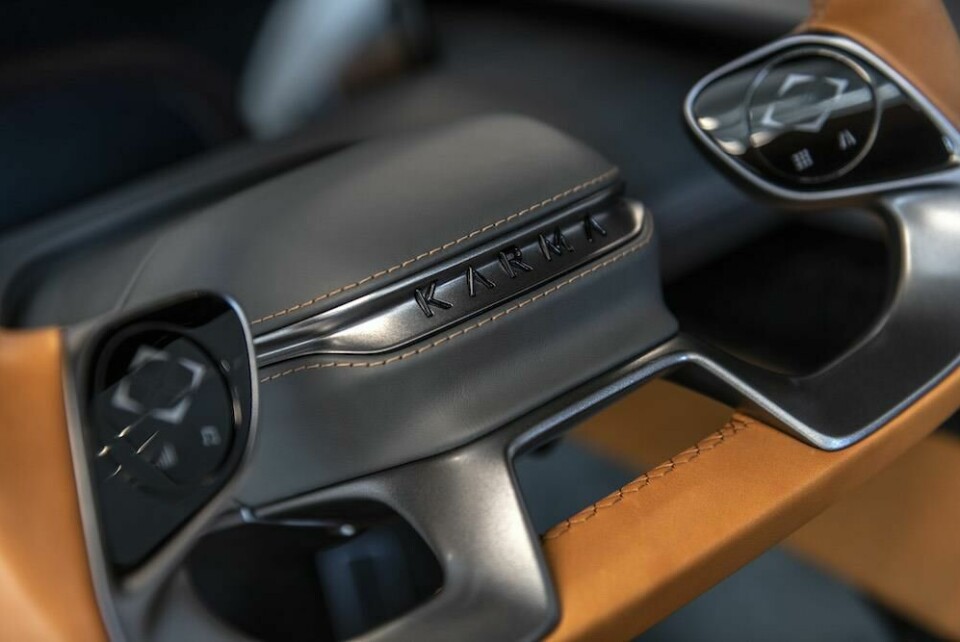
Upon arrival at home, you can use the on-board laser projector to project the screen on the wall in your garage – or in your living room, where some Karma clients are expected to store their cars as drivable sculptures. This experience can be streamed to share with friends; and a subscription service will be available to replay famous drives and racetracks, so a race at Spa, Monaco or on the Mille Miglia will be possible. Thurner describes the experience as a new kind of drive-in theatre – an experience, he notes, that was invented in California.
This reflects the importance of gaming environments. Thurner notes that this year, the largest concert in history was held on the Fortnite platform; he and his team expect more such events in the future, as well as branding and marketing in this virtual realm.
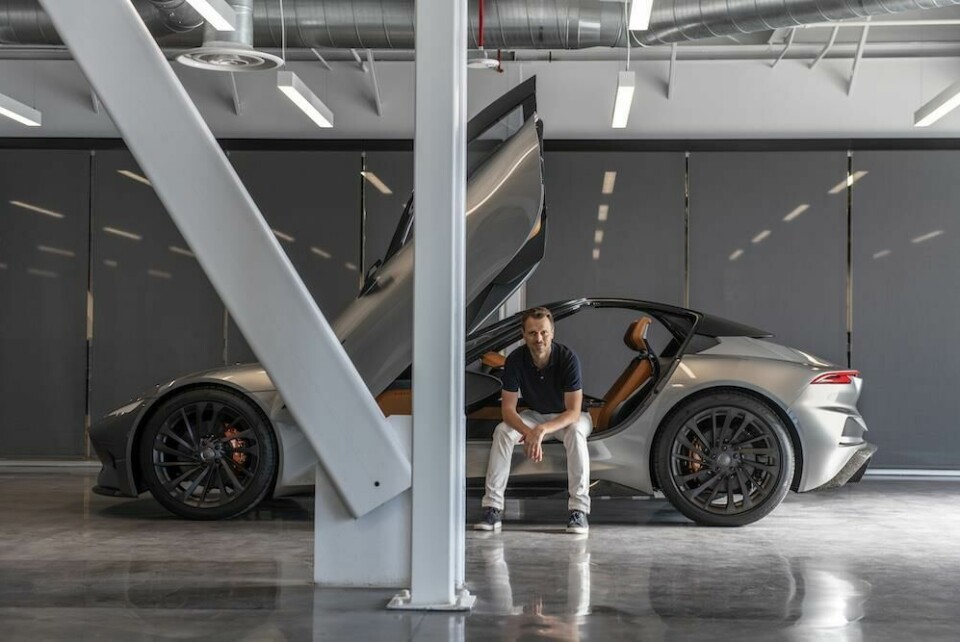
Thurner emphasises that, although future Karma vehicles will be highly distinctive, “it’s not just a matter of form and aesthetics: Karma is about a singular driving experience, and all of our innovation, technology and design will focus on that.
“Our cars are very bold and original and we think that our customers, our ‘tribe”, are, and will be, the same. In the future, our customers will be a new generation that loves to drive, but also embraces a new 360-degree driving experience that includes driving in both real and virtual worlds, and sharing that experience with fellow enthusiasts.”
Our view:
A glimpse of Karma’s future was shown in the SC1 roadster, a pure-electric vehicle with advanced range and power. The styling, by Karma’s in-house team, is a clue to the company’s future offerings, while the interior design reflects emerging trends in HMI, 5G connectivity, and advanced touch, voice, eye and graphical interfaces.
At first glance the SC2 looks like a merely a coupé version, but a closer look reveals an evolved expression of the design impulses that formed the first concept, and subtle but important and fundamental differences between the two cars – especially as one settles into the cockpit.































